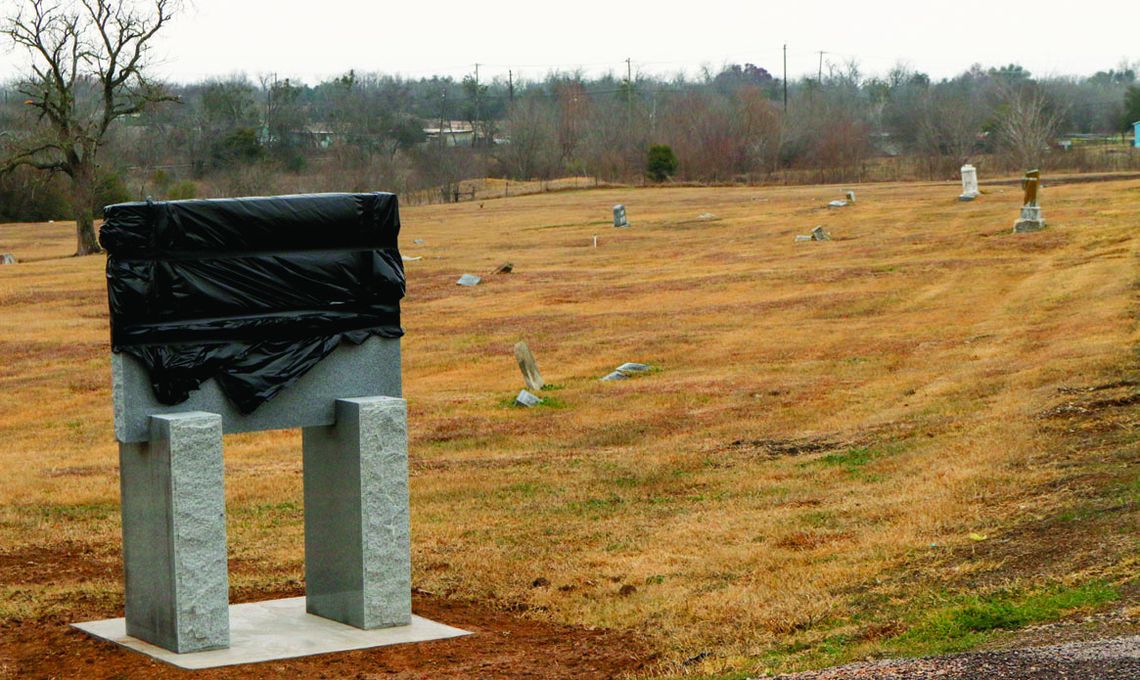Only a few grave markers remain in the field where hundreds have been buried, in a far corner of the Taylor City Cemetery known as the Historical African American section.
Thanks to a push from local community members, descendants and history groups, those first Black families –– many of them forgotten –– are now remembered thanks to a special monument.
An unveiling of the marker, information program and dedication at 2 p.m. Saturday, Feb. 1, is hoped to spark even more interest in these early pioneers.
The marker is found at 1101 E. Fourth St. Its official debut marks the start of Black History Month, Feb. 1-March 1.
“These were people who, for the most part, were born in Taylor, lived and died and were buried in Taylor and many still have family members living here,” said Councilman Gerald Anderson.
Some of the deceased were buried as long as 140 years ago and only identified by wooden markers, which have since deteriorated. Now, a granite marker will stand tall to represent those whose final resting places can no longer be found. The Taylor Conservation and Heritage Society commissioned the memorial to commemorate those interred in the segregated burial field. The land for the monument was donated by the city, and the base was donated by San Gabriel Monument Co.
The Livingston Foundation partnered with the Heritage Society to pay for the marker.
“This really fits into the definition of what the Livingston Foundation wants to help support,” said Mark Schroeder, a spokesman for the foundation. “When we received this grant application, we thought it fit just square in the middle of the kind of projects and kind of organizations that we want to help. It was really an easy decision for us.”
The fund was created by Leo Livingston, a longtime Taylor resident, to continue his work of supporting local charitable causes after his death. The fund has been giving grants to organizations including Good Life Taylor, Texas; the Taylor Independent School District; Meals on Wheels; and others for about a decade.
The Historical African American burial section comprises the first four blocks of the second addition to the original cemetery and Blocks 5, 6, M and N of the third addition.
Famed Taylor physician and activist Dr. James Dickey is interred in Block 5.
The Taylor City Cemetery received its Historical Texas Cemetery designation from the Texas Historical Commission in 2022. The land became the official city gravesite around 1889 when Taylor acquired the property, but the oldest graves pre-date the city’s ownership by more than 30 years.
According to the conservation and heritage society, the Rectors were Taylor’s earliest Black residents, and the family's members were some of the first to be interred in the Historic African American burial ground. There is still a living member of the Rector family in Taylor: Ernest Rector, one of the town’s oldest residents at 96.
“I believe the significance of a monument such as this brings great pride to our cemetery, along with increasing the beautification and overall appearance of the cemetery,” said Morgan Cook, cemetery sexton. “It also creates a place for families to come honor, remember and pay their respects so that all those who have come and gone before us are never forgotten.”
In addition to the monument, visitors will be able to learn more about the site and its inhabitants on the cemetery’s grave-locator app. The app directs visitors to notable burial places. It will now have a special informational feature about the Historical African American section.
For more, visit taylortx. gov/266/Cemetery.





